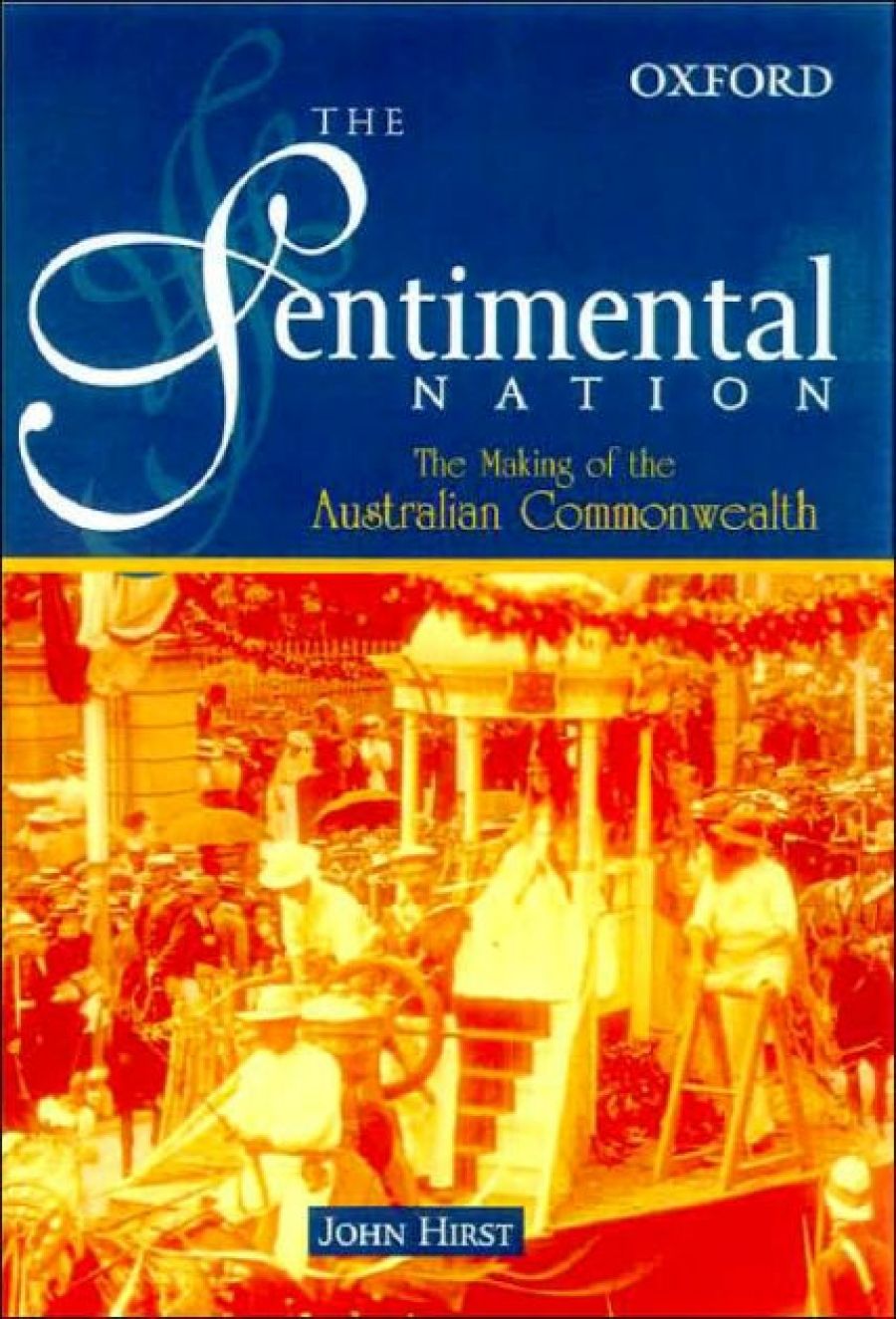
- Free Article: No
- Contents Category: History
- Review Article: Yes
- Online Only: No
- Custom Highlight Text:
When John Hirst accepted the challenge of writing a history of Federation of scholarly quality but fit for a broad popular readership, he may have felt himself on a hiding to nothing. Previous historians have succeeded in convincing Australians that the story of the making of the Australian Commonwealth is at best dull.
- Book 1 Title: The Sentimental Nation
- Book 1 Subtitle: The making of the Australian Commonwealth
- Book 1 Biblio: Oxford University Press, $34.95 hb, 388 pp, 0195506200
When John Hirst accepted the challenge of writing a history of Federation of scholarly quality but fit for a broad popular readership, he may have felt himself on a hiding to nothing. Previous historians have succeeded in convincing Australians that the story of the making of the Australian Commonwealth is at best dull. Who wants to know about a collection of hirsute, largely overweight, and overdressed middle-class politicians arguing about the nexus between the Senate and the House of Representatives?
Unlike the Americans, we did not begin with a ringing declaration of independence from Mother England. Unlike the French Revolution, we offer no images of impassioned crowds storming Pentridge. ‘Advance Australia Fair’ is no substitute for the Marseillaise. Unlike the old Soviet Union, our constitution contains no mission statement of community values and aspirations, and some, such as Don Watson, argue that we are the poorer for it.
Even during the Federation referenda of the late 1890s, Labor writers in Victoria and New South Wales were damning the proposed federal constitution as a bourgeois plot enabling capitalist bosses to organise more efficiently. The federal parliament, claimed the Brisbane Worker, would deliver neither one-manone-vote, women’s suffrage, nor a White Australia policy. The new Commonwealth achieved the lot within eighteen months of its creation.

